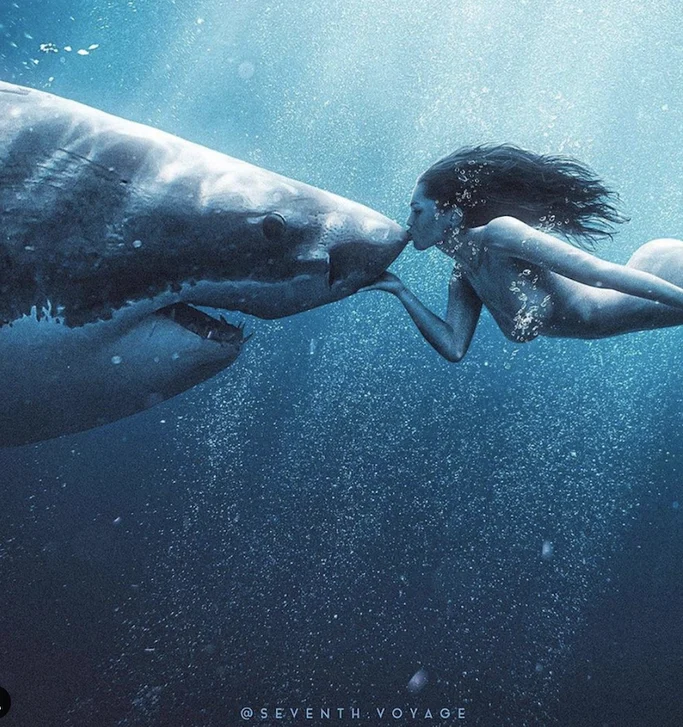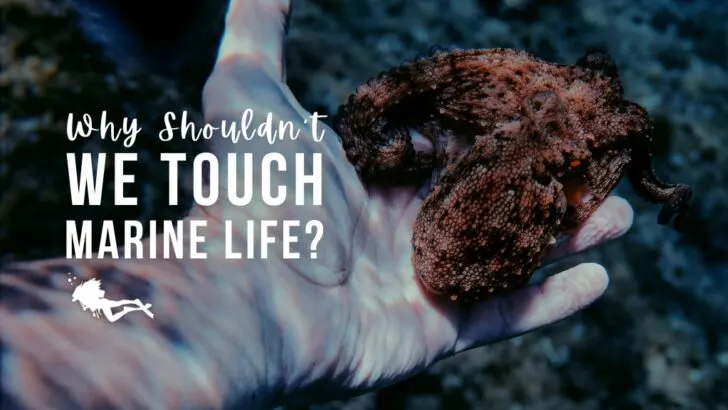Have you wondered exactly why we are told not to touch or harass marine life? Even if a turtle comes right up to looking like it wants a high five or a dolphin is swimming in your direction looking like it wants a pat on the head? We talk to Girls that Scuba ambassador Inka Cresswell who tells us exactly why it’s harmful to touch marine life.
Our oceans are home to an abundant variety of life. But as we all know, they are under huge amounts of pressure. Climate change, ocean acidification, habitat loss and overfishing are just a few. The one we often avoid, though, is the pressure caused by us – the tourism industry.
As divers, we travel around the world to seek out some of the most incredible marine experiences but it’s so important that we are all ocean advocates and ensure that our presence does not impact our marine life negatively. As a Marine Biologist and Dive Instructor here are some of my top tips to ensure that you leave our ocean environment in a better state than you found it.
So, why shouldn’t we touch marine life?
As a new diver this may seem an odd rule. We are so used to interacting with the natural world through touch, but in our underwater world it’s so important that we understand how damaging we can be.
Many marine creatures are very fragile. Even the gentlest of touches could be damaging to delicate structures such as corals. A light kick of a fin could destroy years of growth, destroying a structure that could act as a habitat for a huge variety of marine creatures.
We can also carry/transfer disease between species or leave behind toxic chemicals from our sunscreen or cosmetic products. This is important because it’s not something we can physically see but could have irreversible widespread damage.
Marine life can also pose a serious threat to us. There are many species of fish with venomous spines (e.g. lionfish, weever fish), and species of coral that have a severe sting (e.g. fire coral). Even octopus can be incredibly venomous (e.g blue ring octopus).
Our oceans are full of incredibly adapted species, so many that it would be impossible to list all the critters that could injure us if we were to touch them. That’s another reason it’s important to adopt a no-touch policy. Without constantly having an ID book, it’s incredibly difficult as a diver to know which individuals could be venomous.
But people on Instagram do it all the time?

Unfortunately, people handling marine life while diving is something we see all the time on social media. We as a dive community mustn’t follow their example. As divers, we need to respect the marine environment and all of its creatures. This includes respecting their space and not harassing marine life.
Our ocean inhabitants are already dealing with a huge variety of human-caused stresses – divers shouldn’t be one of them! It’s also important to understand why people are handling marine animals. Many images we see online of people handling sharks and other large marine species are scientists. They are only touching the marine life as it is an essential part of their research. For example, they may be deploying tags, taking biopsies, taking measurements, or swimming a shark back into deeper water after they have been caught for research purposes. In these instances you may see scientists holding the shark’s fin, actively helping it to swim as it recovers.
It’s really important that we understand the context of these images before judging and that we don’t attempt to replicate what we see. These individuals go through extensive training to be able to work with marine life the way they do. Even in scientific research, the scientists put a huge priority on minimising the animals stress. They try to keep handling to an absolute minimum, often monitoring the species’ vitals and having strict protocols in place to release the animal as soon as it becomes too stressed.
When can I touch marine life?
This being said, there are instances during dives where it is okay to touch marine life. If you are taking part in a coral restoration project you may under supervision be directed to handle corals. During a dive against debris, you may need to encourage an octopus to leave a plastic bottle or remove marine creatures before removing debris from the ocean.
In these cases we can interact more directly with marine life. It’s still important that we know our fish ID, though, as some coral, fish and cephalopod species can have a powerful sting or be very venomous. Even in these occasions, it’s important we handle with care and try to keep direct contact to a minimum.
During dives with strong current, you may also find yourself in a situation where you need to hold onto something to wait for your buddy or catch your breath. On these occasions, always look for a piece of bare rock and use this if you can.
Carrying a reef hook is also a great idea for current diving. If you do need to take a break on a densely populated site you can hook onto an overhang or small rock without damaging surrounding reef. Make sure you know how to effectively deploy and store your reef hook before attempting to use in a current. They can be even more damaging if not used and stored correctly.
How can I avoid accidentally touching or kicking marine life?
If you’re new to diving you may still find yourself unstable in the water as you learn your buoyancy. Try and keep a large distance between you and the reef to make sure you don’t kick it accidentally. This also removes the temptation to grab something to steady yourself.
On a wall dive, stick to the blue side of your buddy while you get the hang of things. This way if you do lose control of your buoyancy you won’t crash into any of the marine life. It’s also important to do a thorough buddy check before the dive. Ensure you don’t have anything dangling down that could damage the reef if it’s dragged below you.
Don’t harass marine life
Our presence in the water can also impact the way marine life behaves. If we harass the marine life by attempting to touch it they may leave the area or have to change their behaviour to avoid us. This won’t only ruin the dive for you and your buddies. It can also be damaging to the marine life, as you are making them use up essential energy stores they should be saving for escaping predators or foraging.
As an underwater photographer, something I have learnt over the years is that for the best photos you need to wait for the marine life to come to you. The best photos I have taken of people with wildlife is when there is natural curiosity and respect between the divers and the species. This applies to sharks, turtles, and even dolphins.
If you chase the marine life the majority of the time they will leave. If you keep a respectful distance, though, you are far more likely to have a long meaningful interaction. This will provide much better photo opportunities.
Only dive with companies that put Animal Welfare as a Priority
It’s also important that we think carefully about the dive organisations/companies we choose to dive with. If 40+ snorkelers are jumping in the water on top of a whale shark, this is wildlife harassment. In locations where these activities take place, there are often very few regulations in place to protect the marine life. It’s not uncommon to see large propeller scars on whale sharks due to the intense boat traffic and unregulated tourism.
Try and research the companies and practices you engage with before making a booking. You will enjoy the experience far more with a respectable company that actively considers the animal’s welfare when selling shark tourism experiences.
Be an Ocean Advocate
As divers, we are in an incredible position to advocate for our marine environment. By investing in shark tourism, we can prove that sharks are of more value alive than in the shark fin trade. This provides income for local coastal communities.
Our coral reefs are also a major source of income for people around the world, but they will only continue to provide this essential income if they are protected. That means all of us doing our part to ensure that, as divers, we do not harm these precious ecosystems.

About the Author
Inka Cresswell is a PADI Instructor, Advanced Nitrox Diver, AAUS Scientific Diver and Underwater Photography Instructor. She has a degree in Marine Biology and a masters in Wildlife Filmmaking, and currently works as a researcher on ocean based wildlife documentaries. Her underwater cinematography work has been featured on the BBC. She is currently working collaboratively with several NGOs and dive companies to make marine conservation and STEM careers more accessible for women and minorities. Follow Inka on Instagram!

